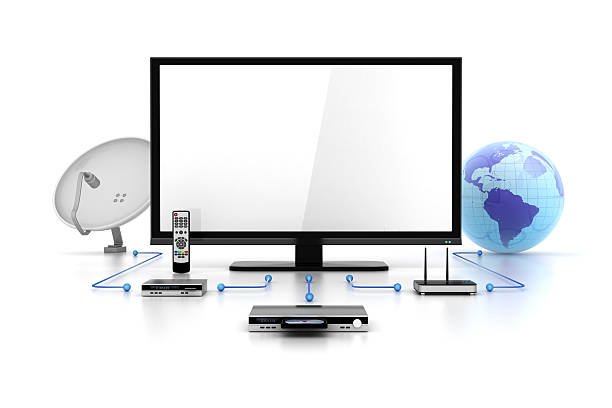Modern entertainment setup moves away from messy cables, and many people are surprised: Is it possible to connect a fixed top box with TV without using traditional cables?
If you want to tear your location, reduce chaos cabling or just detect modern solutions, this guide will help you understand how to connect your top box with minimal cables like your TV -threaded way or HDMI.
But before we dive into wireless options, it is worth noting that the most reliable way is one of the most reliable way to connect through HDMI. If you are not quite ready for a wireless setup, how to know how to connect the Set-top box to the TV using HDMI cable, can still make your layout dramatically simplified.
Can You Connect a Set Top Box to TV Without Cable?
Absolutely—there are a few ways to connect your set top box to your TV without running traditional coaxial or AV cables across the room. These include:
- Wireless HDMI transmitters
- Wi-Fi streaming capabilities (on newer boxes)
- Screen casting/mirroring solutions
- Network-based streaming apps (for IPTV boxes)
Let’s explore each option.
1. Wireless HDMI Transmitters
A wireless HDMI kit is the closest you’ll get to a “no cable” connection for your set top box.
How It Works:
- Plug a transmitter into the HDMI OUT port of your set top box.
- Plug a receiver into the HDMI IN port of your TV.
- The transmitter sends video and audio signals wirelessly.
Pros:
- Clean, cable-free look
- Supports high-definition video
- Works well for across-room setups
Cons:
- Can be expensive
- Occasional signal interference
- Latency issues if you’re gaming
Despite the higher cost, it’s a fantastic way to connect your devices without visible cables running along walls or under rugs.
2. Smart TV Streaming Apps
If you own a modern smart TV and a compatible streaming-capable set top box, you might not need cables at all.
How It Works:
- Both the TV and the set top box connect to your Wi-Fi.
- Many streaming boxes (like IPTV boxes) support apps that can cast or stream directly to your TV.
Examples:
- Chromecast built-in: Some set top boxes can cast directly to a Chromecast-enabled TV.
- DLNA support: Stream content over your local network.
- Apple AirPlay: For Apple TV and compatible devices.
Pros:
- Truly wireless
- Minimal setup
- Great for streaming content from apps
Cons:
- Limited by your Wi-Fi strength
- Possible lag with high-bitrate video
- May not work for live cable channels
3. Screen Mirroring
Some set top boxes and TVs support screen mirroring (Miracast, AirPlay, etc.). Essentially, your TV mirrors what’s playing on your set top box.
Pros:
- No physical cables needed
- Simple for photos and videos
Cons:
- Lower quality than direct HDMI connection
- Not ideal for live TV channels or movies
- Audio lag can occur
This is more practical for occasional use, rather than for full-time TV viewing.
Why HDMI is Still a Great Choice
While wireless solutions are exciting, nothing beats the reliability and simplicity of an HDMI connection. If you’re open to using a single cable, knowing how to connect Set-Top Box to TV using HDMI cable is essential.
Benefits of HDMI:
- High-definition video and crisp audio in one cable
- Stable connection with no wireless interference
- Supports 4K and advanced audio formats
Here’s how to connect it:
- Plug one end of the HDMI cable into your set top box’s HDMI OUT port.
- Plug the other end into your TV’s HDMI IN port.
- Switch your TV to the correct HDMI input.
- Follow on-screen setup steps from your set top box.
Even though this involves a cable, it’s far tidier and simpler than older coaxial or AV setups.
Which Option Should You Choose?
- Go Wireless if:
- You want a clean, cable-free look.
- You’re comfortable investing in wireless HDMI or streaming devices.
- Your Wi-Fi network is strong enough to handle streaming.
- Use HDMI Cable if:
- You want the most stable and high-quality connection.
- You’re OK with a single, sleek cable.
- You want a hassle-free setup.
Remember, learning how to connect Set-Top Box to TV using HDMI cable is still valuable knowledge—even if you’re leaning toward a wireless setup!
Final Thoughts
So, can you connect your set top box to your TV without cables? Yes—but it comes with trade-offs. Wireless HDMI, casting, and smart TV apps all offer ways to ditch traditional wires. However, for the best combination of reliability, quality, and ease of setup, connecting your set top box via HDMI is often the smartest choice.
Whether you go wireless or wired, enjoy your favorite shows without clutter—and with perfect picture quality!


